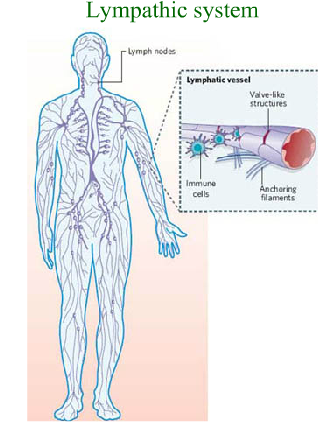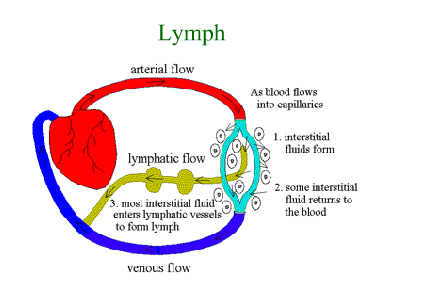
ANATOMY AND PHYSIOLOGY OF THE LYMPHATIC AND IMMUNE SYSTEM
INTRODUCTION
The lymphatic system is part of the immune system and it helps the body fight disease and infection. The lymphatic system includes a network of thin lymphatic vessels that branch like blood vessels into tissues throughout the body.
An important purpose of the lymphatic system is to remove parts of microbes or dead body cells that are brokend down as a result of other immune system attacks. Lymph nodes swell in response to infection.

LYMPH
Lymph is a clear, watery fluid that surrounds body cells and flows in a system of lymph vessels that extends throughout the body.
Lymph differs from blood, but it has a close relationship with blood systems. Lymph fluid does not contain erythrocytes or platelets, but it is rich in two types of leukocytes; lymphocytes and monocytes. The liquid part of lymph is similar to blood plasma but it differs in that it contains less protein. Lymph actually originates from the blood as fluid filters out of tiny blood vessels into the spaces between cells. This fluid that surrounds the cells of the body is called interstitial fluid.
Interstitial fluid passes continuously into specialized thin-walled vessels called lymph capillaries. The fluid in the lymph capillaries passes through larger lymphatic vessels and through deposits of lymph tissues, finally to reach large lymph vessels in the upper chest.

 aziacademy1-Sangeetha
aziacademy1-Sangeetha